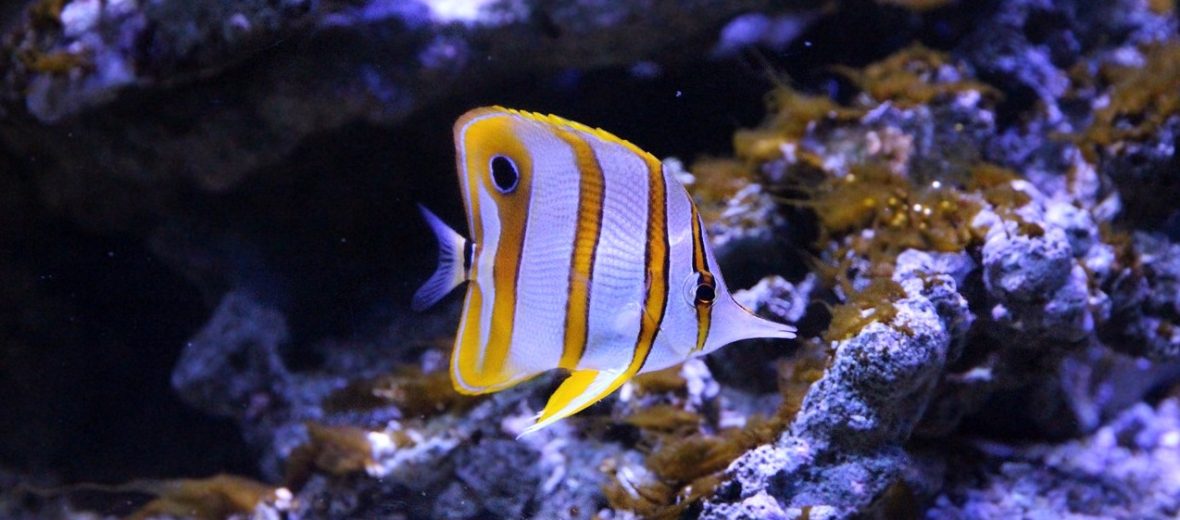
The butterflyfish is so named for their resemblance to butterflies in their flattened appearance and in how they almost flutter when they swim. There are over 120 identified species of these beautiful fish found in both tropical and subtropical oceans around the world; mostly around reef systems. These fish are listed anywhere from Data Deficient to Least Concern by the IUCN. Their primary threats are habitat destruction, pollution, and climate change (which can cause temperature increases, coral bleaching, and loss of viable food sources and habitat).
First the Stats…
Scientific name: Chaetodontidae
Weight: Up to 5 lbs.
Length: Up to 19 inches
Lifespan: Up to 10 years
Now on to the Facts!
1.) They all have elongated snouts and small mouths that are used to find food in tight crevices.
2.) Butterflyfishes are obligate coralivores (eat coral polyps). However, they also feast on sponges, tunicates, and algae.
3.) These fish dwell in pairs or small shoals.
4.) The butterflyfishes are all diurnal (active during the day).
5.) Their consuming of coral polyps and algae aid in the control of both in reef systems.
But wait, there’s more on the butterflyfish!
6.) While a popular aquarium fish, they are rather difficult to keep, as they require a specialized diet and specific water parameters.
7.) Many, like the raccoon butterflyfish, form monogamous (mate for life) pairs.
Did you know…?
The mimic butterflyfish has evolved to resemble the toxic sea chub, which deters predators from making a meal of it while it dines on coral polyps.
8.) Some species, such as the masked butterflyfish, will hunt in small groups, coordinating their movements to flush out invertebrate prey from coral crevices.
9.) Some butterflyfish species are considered sequential hermaphrodites (start as females and later transition into males as they mature). This ensures reproductive success within their shoal.
10.) Numerous species will synchronize their egg-laying with the lunar cycle. This maximizes the survival chances of their offspring.
But wait, there’s still more on the butterflyfish!
11.) Butterflyfish fry hatch into miniscule, transparent larvae that drift along with the currents before finally settling down on desireable reefs as juveniles.
12.) Known as metachrosis, most butterflyfishes change coloration (sometimes dramatically) as they mature from juveniles to adults.
Did you know…?
Some butterflyfish have the ability to secrete toxins from their skin, which deters predators and even contributes to general reef health.
13.) Reaching their adult size is achieved rapidly, sometimes in just 2 – 3 years.
14.) There are many species which sport what is called an eyespot. This is a color pattern that resembles an eye towards the rear of the fish. This is thought to confuse predators into attacking the less important end of the fish.
15.) Some species can change their coloration rapidly to startle and confuse predators, affording them the chance to escape.
But wait, there’s still a little more on the butterflyfish!
16.) Certain species house microscopic algae within their tissues. This provides some micronutrients and contributes to their vibrant colors.
17.) Sharks, eels, snappers, and groupers all prey on these beautiful fish.
Now a Short Butterflyfish Video!
Be sure to share & comment below! Also, check out the Critter Science YouTube channel. Videos added regularly!
Want to suggest a critter for me to write about? Let me know here.
Some source material acquired from: Wikipedia & IUCN



